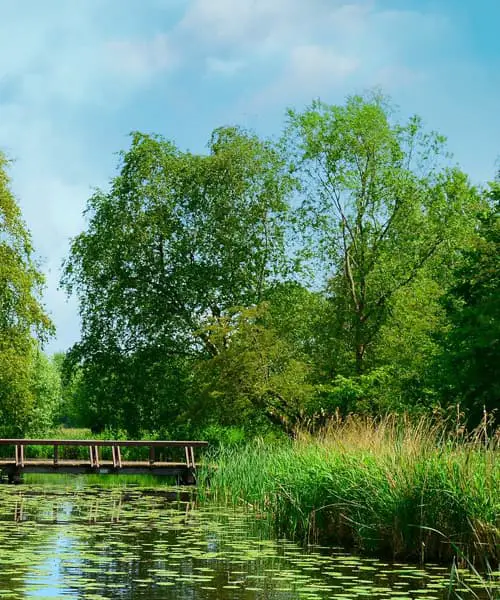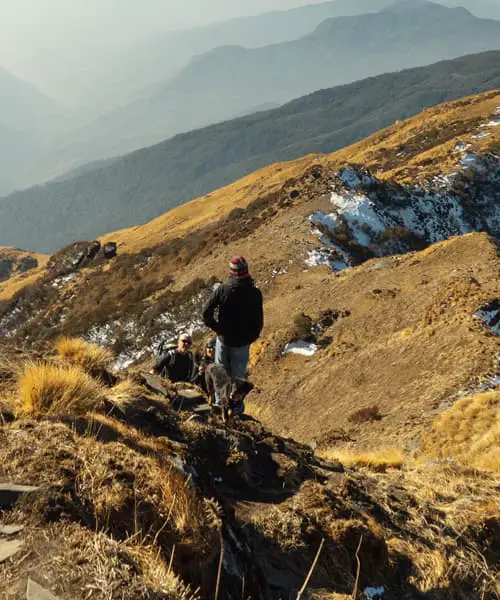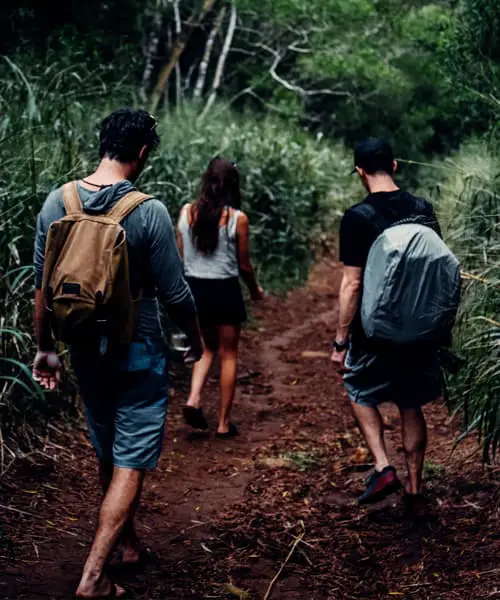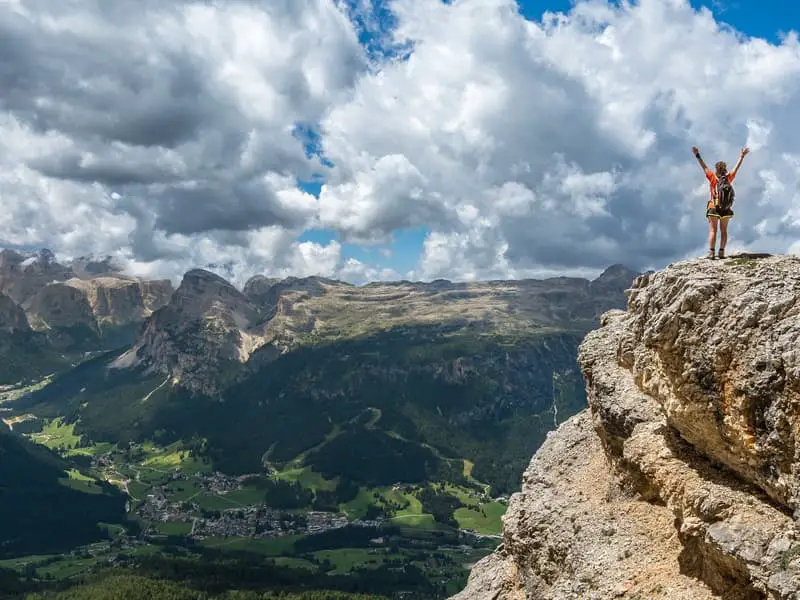Hiking can be a very rewarding activity. Getting fresh air while being surrounded by gorgeous scenery is an excellent way to spend your free time. There are also great health benefits of hiking, which is another great reason to go, besides the enjoyment factor.
Whether you are hiking for enjoyment, exercise, or adventure, safety should always be a priority when planning your hike. When you’re going into the wilderness, unexpected things can happen.
Smart planning and preparation can help to keep you safe in the event of an emergency. In this guide we will cover everything you need to know to prepare for your hike smartly.
Planning
Planning a hike is an often overlooked step. Yet this is an important step towards ensuring you have a safe and enjoyable hike. Proper planning is essential for having a good experience, especially when things go wrong.
Learn the Area
Exploring a new area is always exciting, but you are going to want to find info on the trail you are hiking so you know what to expect. You can check websites for the trail or mountain, or look for government websites that may have the info you need.
Try to get an idea of what kind of wild animals are in the area, the poisonous plants to watch out for, and hunting seasons in the area, and some info on if there is any steep terrain.
If you’re hiking with beginners or children you want to make sure that the hiking path won’t be too hard on them.
Talk to a Park Ranger
If you’re going to be hiking in a state or national park, park rangers can be a valuable source of information that can help you stay safe on your hike. By reaching out to the park department with a short phone call, you can learn things like the types of animals to watch out for, trail conditions, plants to lookout for, and other tips to stay safe on your adventure.
You can check the National Park Service Website to get more information on parks near you. They also have alerts and conditions that can be incredibly helpful when planning your hike.
Share Your Plan with Someone Outside the Group
After you’ve planned your route, it’s a good idea to share your plan with somebody outside the group. By sharing your plan with an outside party, if you don’t return in a timely manner, a search party can be deployed with a good idea of where to look.
This is a simple step that can greatly increase your odds of a safe hike in the event of an emergency situation.
Have an Emergency Plan
- Make sure at least one of the members of your group has a fully charged cell phone with reliable service.
- If the park has an emergency number, make sure you have it saved.
- Know who in your group will go to get help if the phone doesn’t work .
- Choose an easily identifiable landmark to meet at in case anyone gets separated from the group.
Safety
Follow these safety guidelines to ensure you and your group have a safe hike.
Bring a Friend
Using the buddy system when hiking is one of the best choices you can make in regards to safety. You never want to hike alone. If you end up running into some sort of an emergency situation, you want to have at least one person with you that can go get help.

Start Small
If you, or anyone in your group is newer to hiking, it’s important to start with smaller hikes before moving on to larger ones. You will need to understand how your body reacts after trekking miles with your gear on. You don’t want to end up overconfident and undertaking more than you can handle.
There is no worse feeling then when your body is completely fatigued and you haven’t even started the return trip yet. When your muscles are tired is also the time when you are at a heightened risk for injury, so you need to make sure you don’t bite off more than you can chew.
Listen to Your Body
Pay attention to your body when going on a hike. Your body is pretty good at telling you when it needs a break if you listen carefully. Don’t push yourself through any warning signs and be prepared to turn back early if your body just isn’t feeling up to it that day.
Be Careful on the Way Back
As we covered earlier, injuries are more likely to happen after your muscles are already fatigued. When the terrain is uneven, and your leg and balance muscles are already worn out is the most likely time to slip.
Be extra cautious when you are making your return trip and don’t let your footing become lazy. Take your time and focus on being careful with your steps.
Pace Yourself
Undertaking the trail at a comfortable pace is another important step towards a safe hike. When going with a group, best practice is to make sure the pace is comfortable for everyone in the group.
You don’t want to fatigue yourself early on in the hike or you will increase your risk of injury. Make sure to listen to your body and go at a pace everyone is comfortable with.

Start Early
It is best to start your hike early so that you have plenty of time to enjoy your day spent outside. Hiking in the daytime is much safer than when the sun goes down and it’s harder to see the trail in front of you. By starting early you will have plenty of time to return before nighttime.
Stay on the Trail
Staying on the trail is not only safer for you, but it also helps protect the natural environment around you. When you go off the path you are more likely to encounter risky terrain and if you end up getting lost or injured, it will be much harder for a search party to find your location.

Be Aware of Your Surroundings
When hiking, it’s important to pay close attention to your surroundings. Accidents are more likely to happen when you’re not watching the trail and paying attention to your footing. You should also be on the lookout for wild animals and poisonous plants so you don’t go wandering into any potential danger.
Know What to Do if You Encounter Wild Animals
You will want to know what kind of wild animals you are likely to encounter on your hike, and what to do if you come across them. You can usually find this information on government websites or on the site for the trail/mountain you are hiking. You can also get this information from your local park ranger.

Know What Plants to Look Out For
Similarly, you should also get an idea of what kind of poisonous plants to look out for. You can get this information together along with the local animal information from the same sources. Nobody wants to end up accidentally trekking through poison ivy.
Keep Sight of Your Group
Try to keep with your group at all times when going on a hike. This is particularly important when hiking with small children. They should always be in sight at all times so you don’t end up getting separated from each other. It can be easier to stop paying attention and lose track of someone then you think, particularly when you are in an area with a lot of trees.

Gear
Be Prepared for the Weather
Make sure to check the weather report and bring gear to prepare for it. Whether it’s extremely hot, cold, or rainy, you want to be prepared no matter the conditions. You may need to bring extra sun protection, layers, or a rain jacket depending on the conditions of the specific trail you are hiking.
Wear Proper Gear
To expand upon the previous point, you will want to make sure you are wearing appropriate gear for the trail. Wearing weather appropriate gear is important, but so is wearing gear that will be comfortable for long hikes.
The general rule of thumb is to avoid cotton clothes because it will keep moisture close to your skin. You may also want to bring a hat to help protect you from the sun. Hiking boots or trail running shoes can also be a wise choice. Just make sure whatever you end up wearing on your feet is comfortable enough to withstand trekking for hours on the trail.
Sun Protection
Depending on the trail, you can end up being under the sun with little cover for hours. Bringing sunscreen, hats, sun-protective clothes, and sunglasses is essential to help protect you from the elements.
Bring A Lot of Water
Proper hydration is important even on short hikes. If you want to save weight in your pack instead of bringing a bunch of extra water you can bring along a water purification system to help purify and disinfect natural water sources you find along the way.
Bring Healthy Food
Bringing enough food is essential. The general rule of thumb is to bring at least an extra day’s worth of food to be safe. But it’s also important to make sure you are bringing the right kind of foods and drinks to help give your body energy for a long day of hiking. Ditch the pop and candy bars and make sure to bring only nutritious foods out with you on the trail.
Bring a Map
It’s pretty easy to get lost and end up taking a few wrong turns along the trail, which is why bringing some sort of map, compass, or navigational system is always a good idea. They are usually gonna end up being pretty light, so it’s not gonna add much weight to your pack and it’s always best to be safe.
First Aid Kit
You need to be prepared and bring a first aid kit with you out on the trail. You can buy a pre-made kit or you can create your own and bring other emergency supplies. Just make sure to periodically check the expiration date and replace any outdated items as needed.
Source of Fire
Having a source of fire is extremely important out on the trail, especially if you run into an emergency situation. Fire can be used as a signal in case of an emergency, but it is also important for cooking and staying warm. Waterproof matches, fire starters, and lighters are all good choices.
Whistle
In the event that you separate from your group or your group ends up getting lost on the trail, a whistle can help others find your locations. It’s especially advisable for children to carry a whistle should they get lost so you can easily find them.
Flashlight
A flashlight is another important piece of gear that you don’t want to overlook. Even if you plan on heading back on the trail well before sun down, a flashlight is a good idea. In the event of an emergency, things can go from bad to worse really quick when it’s hard to see the trail in front of you. If you’re hiking somewhere with really rough terrain, or somewhere where you need to climb using your arms as well as legs, a headlamp is a good choice.
Knife/Multi-tool
Knives can be extremely useful on the trail, but a good multi-tool will also do the trick. They can be used for food preparation, first aid, repairing gear and much more. They are generally small enough that you won’t notice the extra weight. We recommend everyone in the group carry one.
The 10 Essentials
The list of gear you should bring with you hiking may seem overwhelming at first. But if you really boil it down, there are 10 essential pieces of equipment you should make sure you have on your hike. This is equipment you should carry with you every single time you hike. This equipment will let you respond to an emergency and allow you to safely spend a night outside if you need to.
The hiking and non-profit conservation group the Mountaineers first created the ten essentials, though since then the original list has been expanded. Here is the original list:
- Map
- Compass
- Sunglasses and sunscreen
- Extra clothing
- Headlamp or flashlight
- First-aid supplies
- Firestarter
- Matches
- Knife
- Extra food
Make a checklist when preparing your gear and make sure nothing gets overlooked.
Summary
Hiking an enjoyable activity, but occasionally accidents do happen. To greatly reduce your odds of having a serious emergency while hiking proper planning, safety precautions, and bringing the right gear is extremely important. Follow all these tips and you’ll be well prepared for whatever happens out on the trail.Related Posts:
Health Benefits of Hiking
24 Studies on Green Spaces

